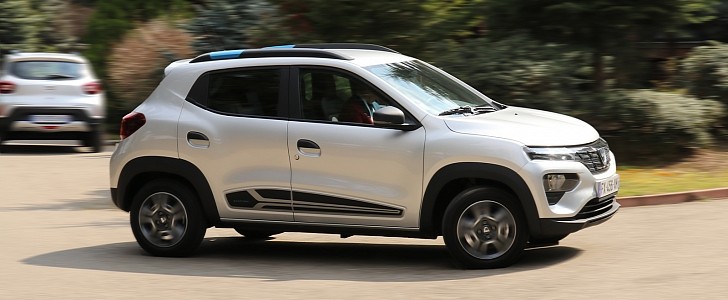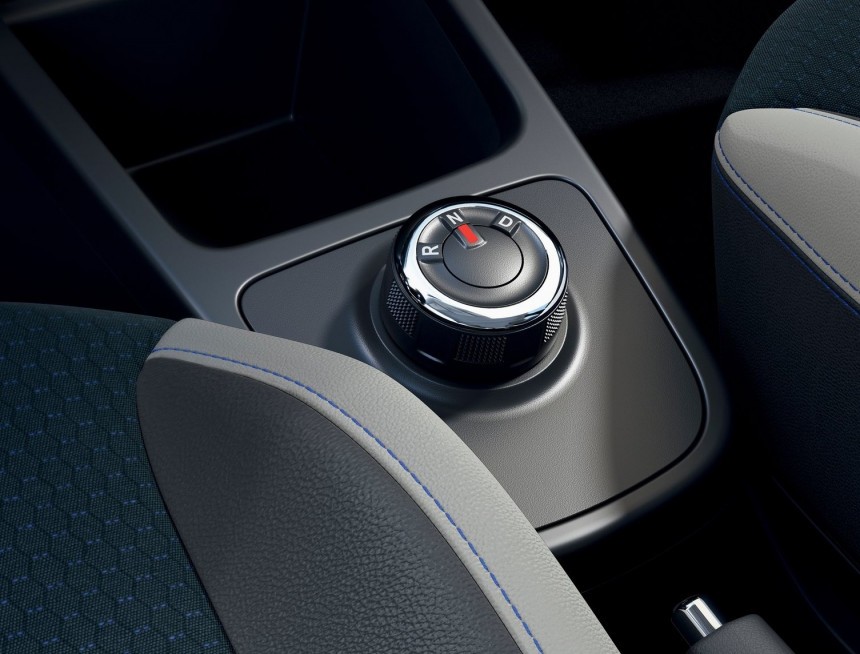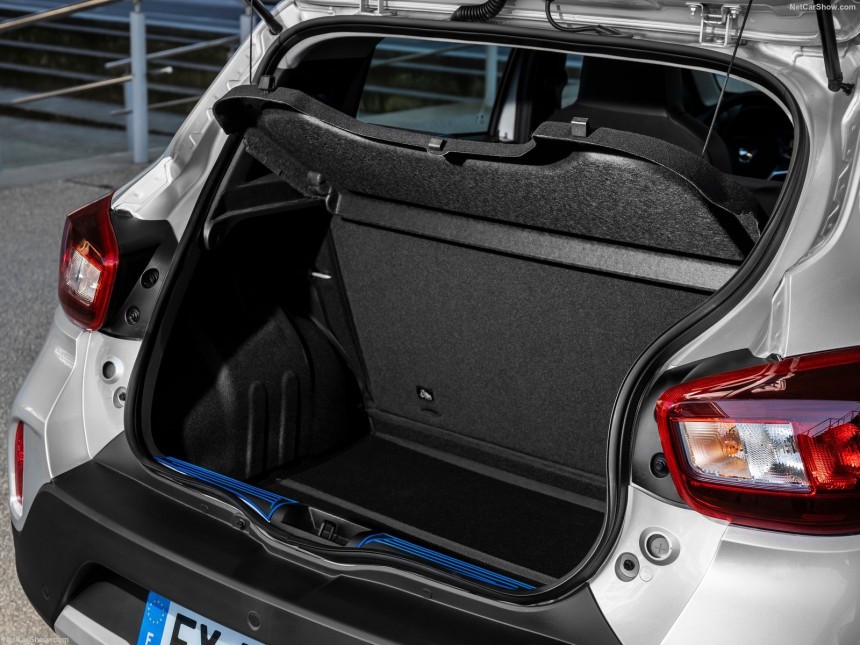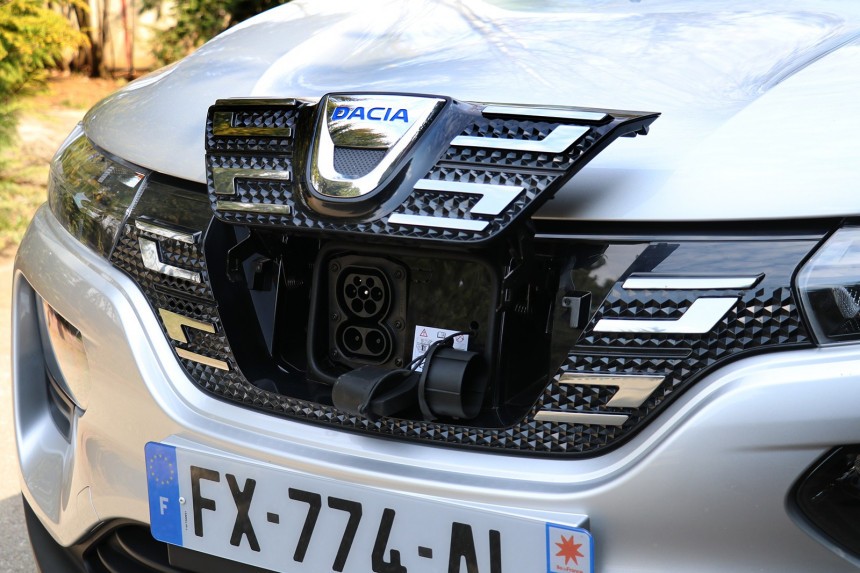2021 Dacia Spring Electric Raises Great Expectations. How Is It, Really?
Dacia Spring Electric opens a new price perspective for those who badly want to buy an electric vehicle. Using the eco-bonuses available in some European countries, it could be acquired even for less than €10000 ($11,800). Is this tiny Romanian-branded but Chinese-made city car a true game changer?
Big electric cars, big prices – there we have Porsche Taycan, Mercedes EQ-automobiles and Tesla-stuff. Small electric cars, low prices – here we have the Dacia Spring Electric, a product developed by the Renault Group (they also produce the Renault Zoe mini hatchback). The list price of the Dacia Spring Electric is about €18100, yet the vehicle might be acquired for half this amount if certain government incentive conditions are applied. Anyway, €18100 means you could get 10 of these Dacias for the price of a Porsche Taycan Turbo S. In fact, what’s this tiny vehicle good for?
The first impression was a positive one. The Dacia Spring Electric doesn’t give the expected perception of a cheap plastic/metal box on wheels. The exterior design looks quite elaborated and inside there are no naked metal areas visible. Of course, a certain simplicity in the treatment of the interior components shape is easy to spot. Yet, everything is in the right place and works properly.
Do they have the sense of humor, at Dacia? Because the round transmission’s selector made us remember the one in the former Jaguar XF. Also, a bit funny: the cost cutting choice concerning the instruments cluster. Only the center part of is consists of a small digital screen, while the rest in a semi-transparent colored plastic panel illuminated by LEDs (or bulbs?) from underneath. Was it too expensive to put a digital display as big as the whole cluster in there?
Good point: all the practical compartments around the front seats are big. We refer to the glove box and the doors interior panels deposit boxes. The space for the front seated people is far from giving any claustrophobic impression, even if the car’s exterior width is only 162 cm (63.8 in). Two passengers may be seated in decent conditions on the rear bench, with obvious limits for the knee space.
They said the test vehicles used for this session were not equipped with the standard front seats, which will be used for the production models. We hope so, because the seats here had a rather elementary shape, without enough depth concerning the design of the backrest, and the seat’s cushion was pretty flat, too firm and too small. However, at the first sight, these seats were surprisingly good-looking. Firm and flat, these terms also apply to the rear bench. Definitely, the seating comfort is not appropriate for long trips – anyway, the range of the car (230 km, or 143 miles) makes it suitable for urban and proximity use only.
Unexpectedly large trunk: it has a volume of 290 liters (10.2 cu ft), which is something close to the values of some B-segment cars (Opel Corsa, Renault Clio, Ford Fiesta). With the backrest of the rear bench folded, the luggage volume reaches about 600 liters (21.2 cu ft).
The standard equipment includes the Medianav multimedia system with a 7 inch touchscreen and voice recognition, air conditioning, alloy wheels (14 inch), powered mirrors and windows (back and rear), assistance camera for reverse maneuvers. As far as the safety concerns, the ABS, EBD, ESP and six airbags are standard features.
Even if it’s a light car (970 kg or 2,160 pounds), the Dacia Spring Electric has power steering. This is good for maneuvering in tight spaces and, also regarding this, the turning radius is only 4.80 m (189 in). Driving it in town is really easy also thanks to the very good torque characteristic of the 33 kW (45 PS) electric engine: the 125 Nm (92.2 lb-ft) value is reached as soon as you start pushing the pedal!
The 24.7 kWh battery pack ensures a range of 230 km according to the WLTP measurement cycle. Pressing the Eco-button on the dashboard might increase it with about 10%. Charging time may vary from 14 h (usual socket) to 1:30 h (30 kW DC source).
They say the Dacia Spring Electric has a maximum speed of 120 kph (74.5 mph), yet we managed to make it show 130 kph (80.7 mph) on the speedometer without having the impression of doing something extreme. Because there is no internal combustion engine under the hood, the car is really silent no matter the speed.
But, when driving like this, the relativity of space and energy will start to alter what you thought you knew about the Dacia Spring Electric: when speeding, its remaining range will decrease amazingly fast as well!
The Dacia Spring Electric feels solid and has the cool look of a modern small crossover-SUV. There is no cheaper EV on the market (we are not talking about conversions or home-made things, here) and its functional side has enough to offer. A promising commercial career is looming on the horizon for this particularly cost-efficient product, the result of an international collaboration.
The first impression was a positive one. The Dacia Spring Electric doesn’t give the expected perception of a cheap plastic/metal box on wheels. The exterior design looks quite elaborated and inside there are no naked metal areas visible. Of course, a certain simplicity in the treatment of the interior components shape is easy to spot. Yet, everything is in the right place and works properly.
Do they have the sense of humor, at Dacia? Because the round transmission’s selector made us remember the one in the former Jaguar XF. Also, a bit funny: the cost cutting choice concerning the instruments cluster. Only the center part of is consists of a small digital screen, while the rest in a semi-transparent colored plastic panel illuminated by LEDs (or bulbs?) from underneath. Was it too expensive to put a digital display as big as the whole cluster in there?
They said the test vehicles used for this session were not equipped with the standard front seats, which will be used for the production models. We hope so, because the seats here had a rather elementary shape, without enough depth concerning the design of the backrest, and the seat’s cushion was pretty flat, too firm and too small. However, at the first sight, these seats were surprisingly good-looking. Firm and flat, these terms also apply to the rear bench. Definitely, the seating comfort is not appropriate for long trips – anyway, the range of the car (230 km, or 143 miles) makes it suitable for urban and proximity use only.
Unexpectedly large trunk: it has a volume of 290 liters (10.2 cu ft), which is something close to the values of some B-segment cars (Opel Corsa, Renault Clio, Ford Fiesta). With the backrest of the rear bench folded, the luggage volume reaches about 600 liters (21.2 cu ft).
Even if it’s a light car (970 kg or 2,160 pounds), the Dacia Spring Electric has power steering. This is good for maneuvering in tight spaces and, also regarding this, the turning radius is only 4.80 m (189 in). Driving it in town is really easy also thanks to the very good torque characteristic of the 33 kW (45 PS) electric engine: the 125 Nm (92.2 lb-ft) value is reached as soon as you start pushing the pedal!
The 24.7 kWh battery pack ensures a range of 230 km according to the WLTP measurement cycle. Pressing the Eco-button on the dashboard might increase it with about 10%. Charging time may vary from 14 h (usual socket) to 1:30 h (30 kW DC source).
But, when driving like this, the relativity of space and energy will start to alter what you thought you knew about the Dacia Spring Electric: when speeding, its remaining range will decrease amazingly fast as well!
The Dacia Spring Electric feels solid and has the cool look of a modern small crossover-SUV. There is no cheaper EV on the market (we are not talking about conversions or home-made things, here) and its functional side has enough to offer. A promising commercial career is looming on the horizon for this particularly cost-efficient product, the result of an international collaboration.

































